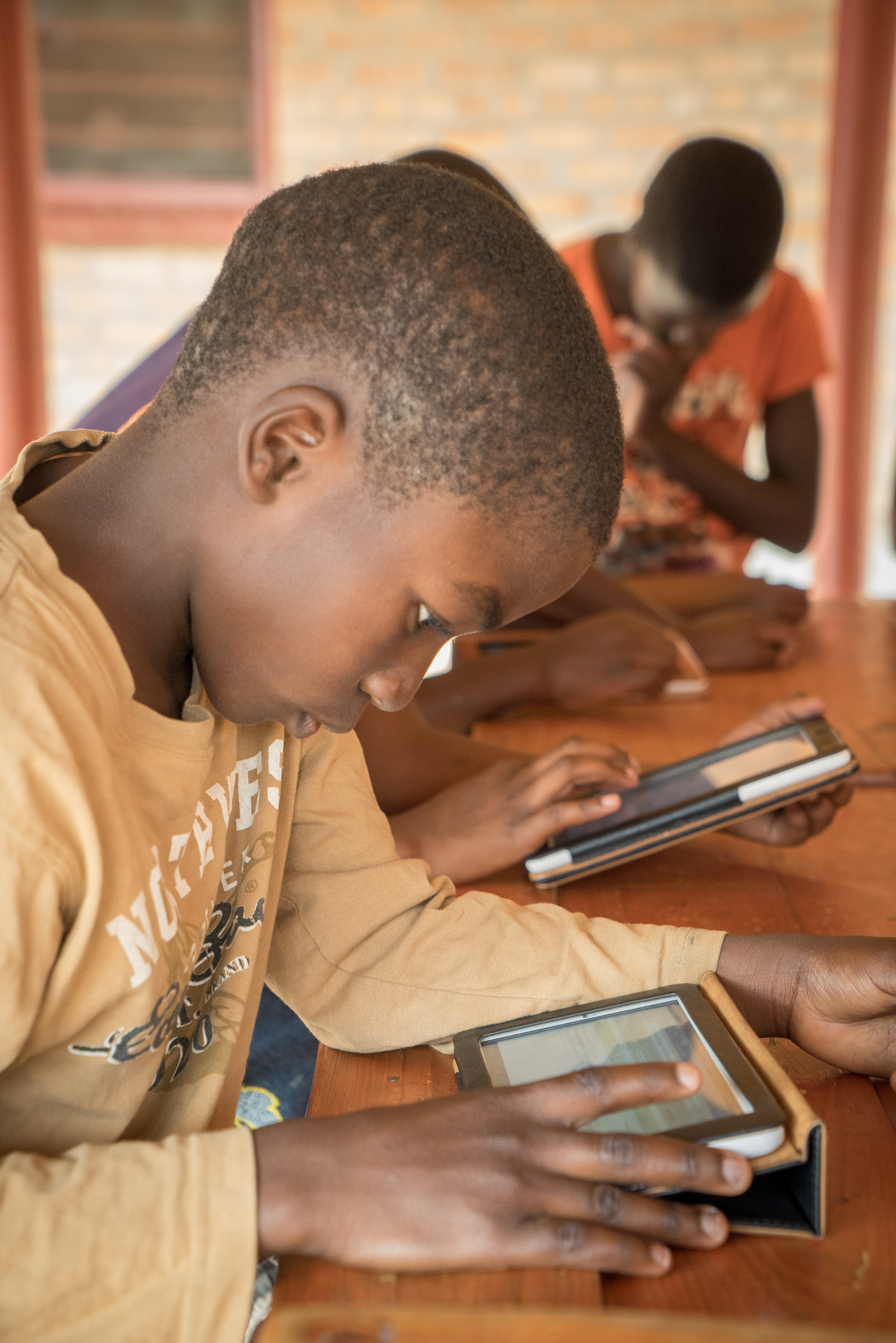Over the last few years, educational technology has been gaining momentum all over the world. With technology being more advanced and globalized than ever, many people are realizing its potential in the educational space. Every day, more and more people gain access to the internet and all of the tools and knowledge it provides. As a result, many firms spend countless hours making the highest caliber educational materials available online. Pushing on the online world creates a very real danger of widening the gap between the online and offline worlds. The people without access to the internet are often the ones who can benefit the most from a quality education and need the most help and this is where Learning Equality could be a game changer.
Learning Equality is an innovative technological non-profit with the goal of achieving universally available education. Utilizing low-cost hardware, Learning Equality supports transformative classroom experiences by creating, compiling, and distributing open educational resources to places that need it most.
With values of proactivity, community, openness, and empowerment, Learning Equality strives to spread education worldwide and evolve the entire teaching process. Apart from the technology, they are also concerned with how their solutions fit into the overall education ecosystem. By eliminating all the different barriers whether it be technology, training, or preparedness, Learning Equality ensures their platform can be used as effectively as possible.
To learn more about Learning Equality, its platforms, and the challenges they encounter, I spoke with co-founder and executive director Jamie Alexandre.
 In the Photo: Learning Equality Co-Founder/Executive Director, Jamie Alexandre. Photo Credit: Learning Equality
In the Photo: Learning Equality Co-Founder/Executive Director, Jamie Alexandre. Photo Credit: Learning Equality
What is the story behind Learning Equality?
Jamie Alexandre: In the summer of 2012, a friend and I were interning at Khan Academy and had an idea to bring it offline using a Raspberry Pi. We saw an opportunity to bring together the things happening in the online world with this low-cost hardware and allow the offline world access to those resources. The first prototype of KA Lite was built during the summer at Khan Academy and when I returned to UCSD in the fall, more students jumped on board.
Other graduate students who had backgrounds in education, teachers, and integrating technology experts came at it from different perspectives. We built out the prototype of over the fall of 2012, announced it online as an open-source project in December of 2012 through Hacker News, and thought maybe we would find a few people with interesting ideas. We saw some of that but what we really saw was people running with it and starting to use it immediately.
Right after we launched there was a flood of partnership requests, and people deploying it in contexts we never thought possible, such as around prisons in the United States. We were quickly having conversations with agencies and governments so it became very clear that there was a huge need. That’s when we realized we needed to start an organization to really carry this effort further, beyond distributing something like Khan Academy, but as a way to use this technology to fully bridge offline and online educational communities.
What are the major products that Learning Equality provides?
JA: Our first platform, KA Lite, is essentially an offline version of Khan Academy. This was our initial idea to bring a fantastic educational resource offline. However, the program we are focusing on now to further bridge the offline and online communities is Kolibri. We started from the ground up and learned lessons from KA Lite in terms of what people were always asking far and the support they wanted.
Kolibri provides a customizable digital curriculum, and is generally run on an offline server such as a laptop in a classroom or any other learning space. It allows a web-like experience, but uses a local server so it doesn’t require an internet connection. The teacher can see student data, manage accounts, assign content, and create exams and lessons completely from this offline system. Kolibri is also content agnostic, utilizing many different educational content sources from around the web. We gather these resources into one central repository so organizations can then adapt and organize that content into a bundle that best meets the need of their educational programs. They can then take those bundles of content and load them to the offline servers and take it into schools for offline use.
 In the Photo: A classroom in India using Learning Equality’s platform KA Lite. Photo Credit: Thomas Van Den Driessche
In the Photo: A classroom in India using Learning Equality’s platform KA Lite. Photo Credit: Thomas Van Den Driessche
How do students tend to adopt your platform?
JA: There are two paths by which a user might end up using our service: We partner with organizations that want structured support in implementing a larger program. We work closely with them, provide training, advise them on implementation within their model, and identify any tweaks and adaptations they might require.
But that’s only a small subset, with the majority being what we call grassroots adoption of the platform. That’s when people come to our website and download the software and training materials that we’ve built through working with our partners. Because it’s all open and free, they can take that and run with it, enabling successful implementations that we haven’t even been directly involved with.
They are using the toolkit and software that we produced, and then they don’t need us, which allows it to be a lot more scalable. We don’t want the scale of the impact to be bottlenecked by the size of our team. Our primary goal is to create something open and free which can be adopted and used effectively because that’s the route to a global impact.
What happens if a student is struggling and requires help?
JA: Generally what happens is that because everything is local, for example in a classroom, a teacher can see if a student is struggling, and the teacher can then actually come and work directly with them and help them overcome their personal barriers. The teachers act as a facilitator or coach because their goal is to encourage and motivate students to take the next step. That’s how we think about one role of the teacher.
Other times older, more experienced students provide peer support to their classmates. Often there are not enough devices so two or three students end up sitting around one computer and help each other through the problems. This also helps the person teaching as much as the person being taught; it helps solidify the concepts and think about how to explain and communicate the solution, effectively providing a very valuable pedagogical moment.
 In the Photo: Student in Zambia using KA Lite. Photo Credit: Edulution
In the Photo: Student in Zambia using KA Lite. Photo Credit: Edulution
What are the biggest challenges Learning Equality is currently facing?
JA: A major challenge early on was finding people who understand our mission on the funding side and in the online EdTech space. A lot of folks say eventually everyone will have the internet, and it’s too difficult to do all this stuff with offline syncing and copying, so they don’t want to tackle that problem.
A big part of our advocacy has been around reaching those with the least access to infrastructure, larger class sizes, and all of these other educational barriers that are being faced by the offline half of the world. Another healthy challenge is helping people who are adopting it realize that the technology isn’t everything. It’s critical that it is brought in thoughtfully, involving extensive training and support for teachers and students.
One of the leaps in achieving true scale is pushing past the early adopters and bridging the gap with teachers who are more set in their ways and reluctant to use technology. How do you make it easily adoptable and comfortable for anyone to use? That’s a challenge we’ve been focusing on as well.
How do you reach impoverished places with limited internet connectivity?
JA: There are a few models typically stemming from somebody who works with the organization, often an NGO, government, or volunteer group who has access to the internet. In many cases, it’s just an issue of bandwidth or cost, so organizations can download the content once and put it on a device, and from there copy it to many different devices. From that one download, the information can be passed on, and then many students can have perpetual access to the material. Several companies also create devices which are pre-loaded with a bunch of software and material including Kolibri and KA Lite. They then ship it out, so people who are unable to download the material can still have access to our resources.
How does Learning Equality plan to grow from here?
JA: We established a roadmap a few years back. We really want to be a core piece of the infrastructure that can support global education, and I think we have made fantastic strides towards that goal. At the time, we didn’t have many content bases integrated, we now have content from all over the web integrated into the central system and a whole pipeline and team which supports that process. We had this vision of thinking holistically about the training materials and guidance needed to support effective grassroots adoption, and we have made great progress in building out those materials.
In terms of regions, we already have a significant presence in sub-Saharan Africa, South Asia, and Latin America. One area of growth is in the Middle East, with a focus on refugees. An important aspect of that is building content in Arabic because most of the available content on the web is in Western languages. We want to support an ecosystem of producing open content in local languages and cultures combined with translating and adapting content from elsewhere. We don’t want to grow huge as an organization, we’re very partnership focused, and we’ve found that the many organizations working in education around the world are truly amazing. Our goal is to empower those institutions to fully achieve their missions. We can stay small, but be a catalyst that provides the right tools that allow them to change the world.



 In the Photo: Learning Equality Co-Founder/Executive Director, Jamie Alexandre. Photo Credit:
In the Photo: Learning Equality Co-Founder/Executive Director, Jamie Alexandre. Photo Credit:  In the Photo: A classroom in India using Learning Equality’s platform KA Lite. Photo Credit: Thomas Van Den Driessche
In the Photo: A classroom in India using Learning Equality’s platform KA Lite. Photo Credit: Thomas Van Den Driessche In the Photo: Student in Zambia using KA Lite. Photo Credit: Edulution
In the Photo: Student in Zambia using KA Lite. Photo Credit: Edulution






